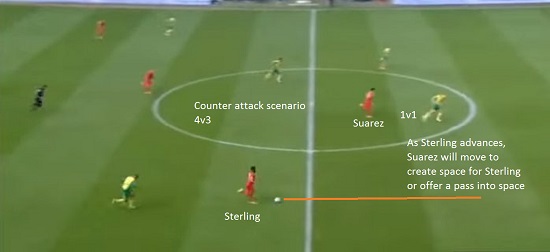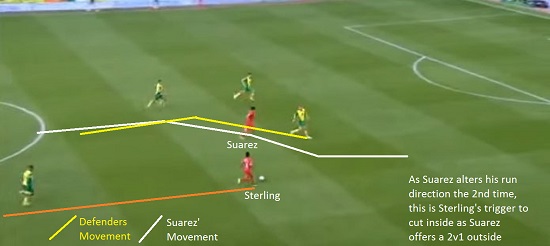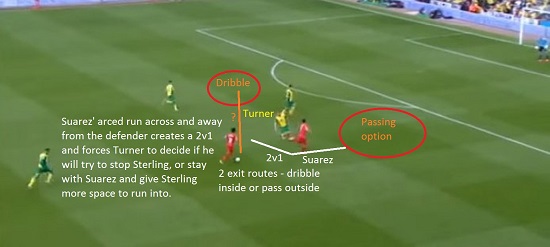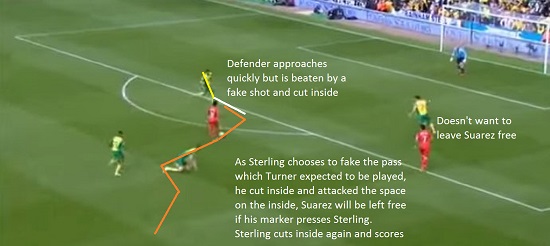By Stevie Grieve
Liverpool in the 2013/2014 season were a joy to watch all season, and the brightest player in the team was Luis Suarez, who won the Players’ and Football Writers Player of the Year awards. Other than the goals he scored, his work rate to press, his desire to chase down loose balls and his unpredictability in attack, he brought an intelligence of movement which helped Liverpool on constructing attacks, building counter attacks and forcing the opposition to make decisions.
Leading the counter attack

As Sterling drives into space, Suarez has an opponent who wants to drop deep, as Norwich want to tuck in and defend from the centre. Sterling needs to attack quickly to stop this happening.
Pulling away to the right space at the right time

As Sterling drives forward, Suarez changes his run direction a couple of times, blocking Turner from pressing then moving to the outside where the space to receive a pass into is. As he moves outside, this is Sterling’s trigger to move inside with the ball and create a 2v1.
Forcing the opponent to make a decision

As Suarez drifts to the outside, the immediate opponent (Turner) has a decision, try to block the pass or press Sterling, but does neither. The covering defender drifts across to deal with the expected pass to Suarez, which leaves space on the inside to dribble into for Sterling.
Thinking ahead of the game

As the covering defender drifts over to track Suarez, Sterling is left 1v1 with 3 possibilities – to shoot, to delay until pressed to pass to Suarez, or to dribble past the last defender and try to score.
As the defender rushes over and is unbalanced, Sterling fakes to shoot, then cuts inside and scores from the dribble from his own half.
Suarez’ movement, but more important is the timing of the movement – had Sterling made the pass to Suarez, Sterling could have ran through and had a 2v1 and maybe receive a return pass, but instead decided to go himself when Suarez’ timing of his run made a pass easy for him to pass into a penetrating position with Sterling running free in the centre.
By Stevie Grieve. (Follow on Twitter @steviegrieve) Stevie is also the author Coaching the 4-2-3-1 and Coaching the 4-2-3-1 Advanced Tactics


